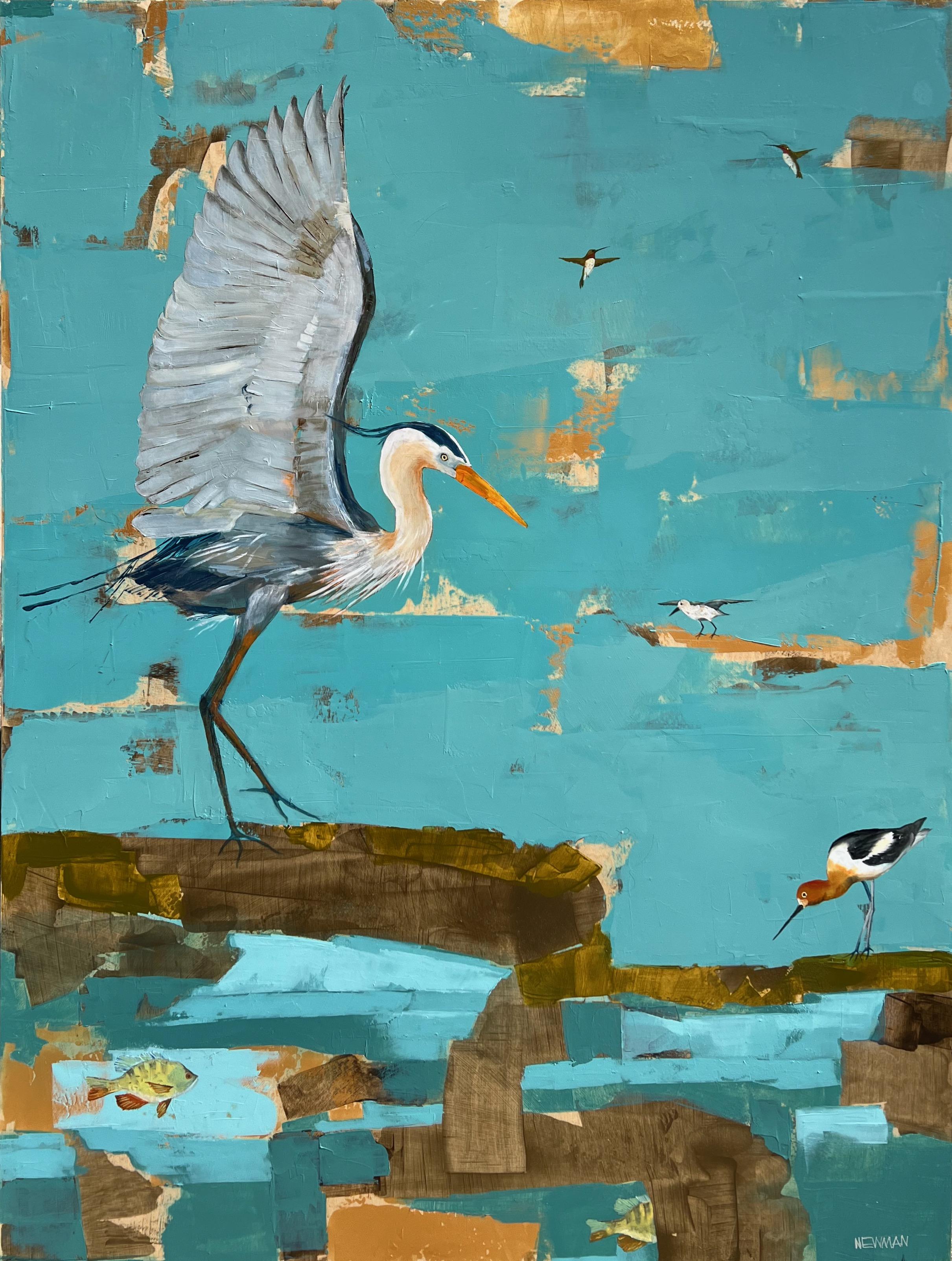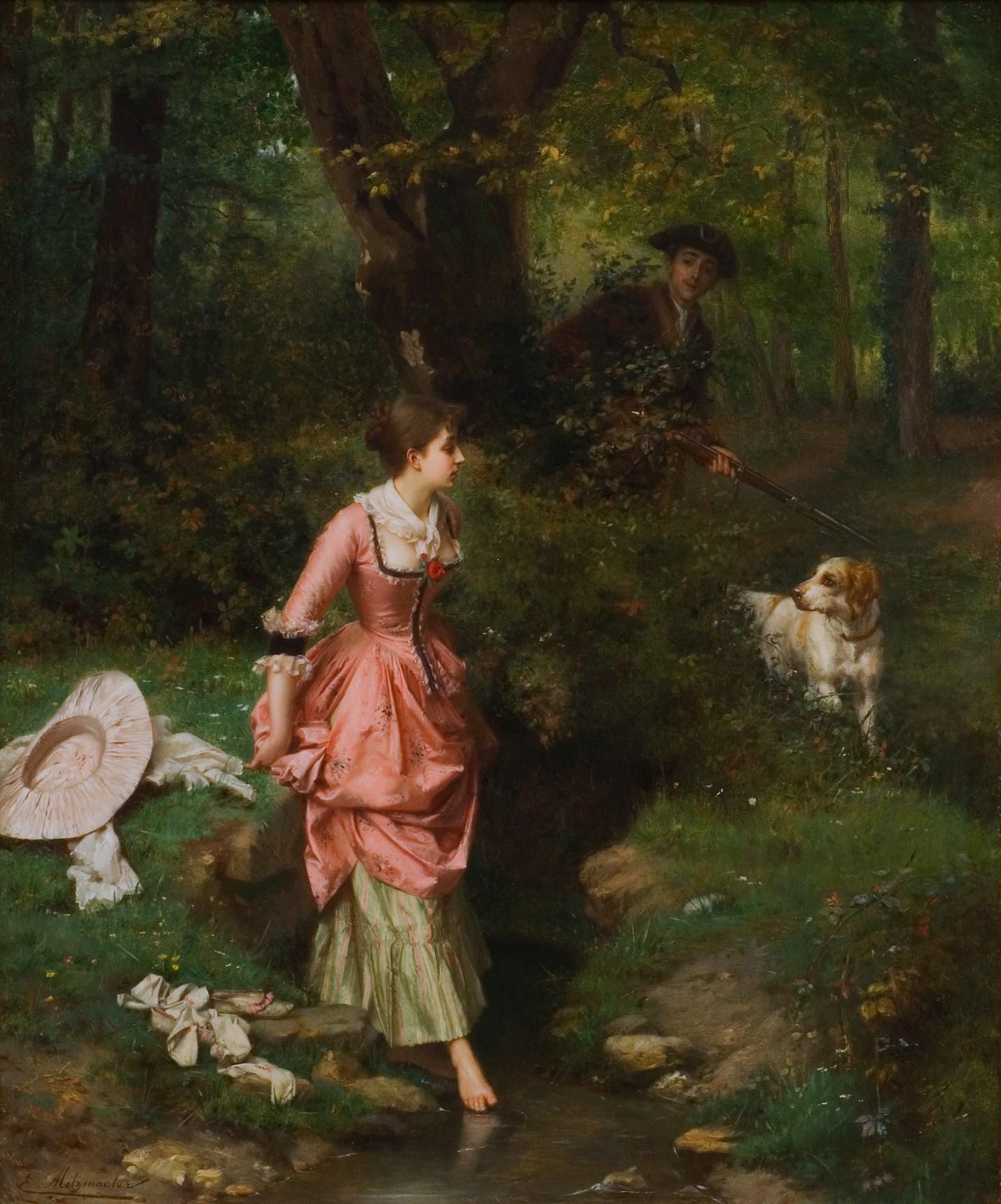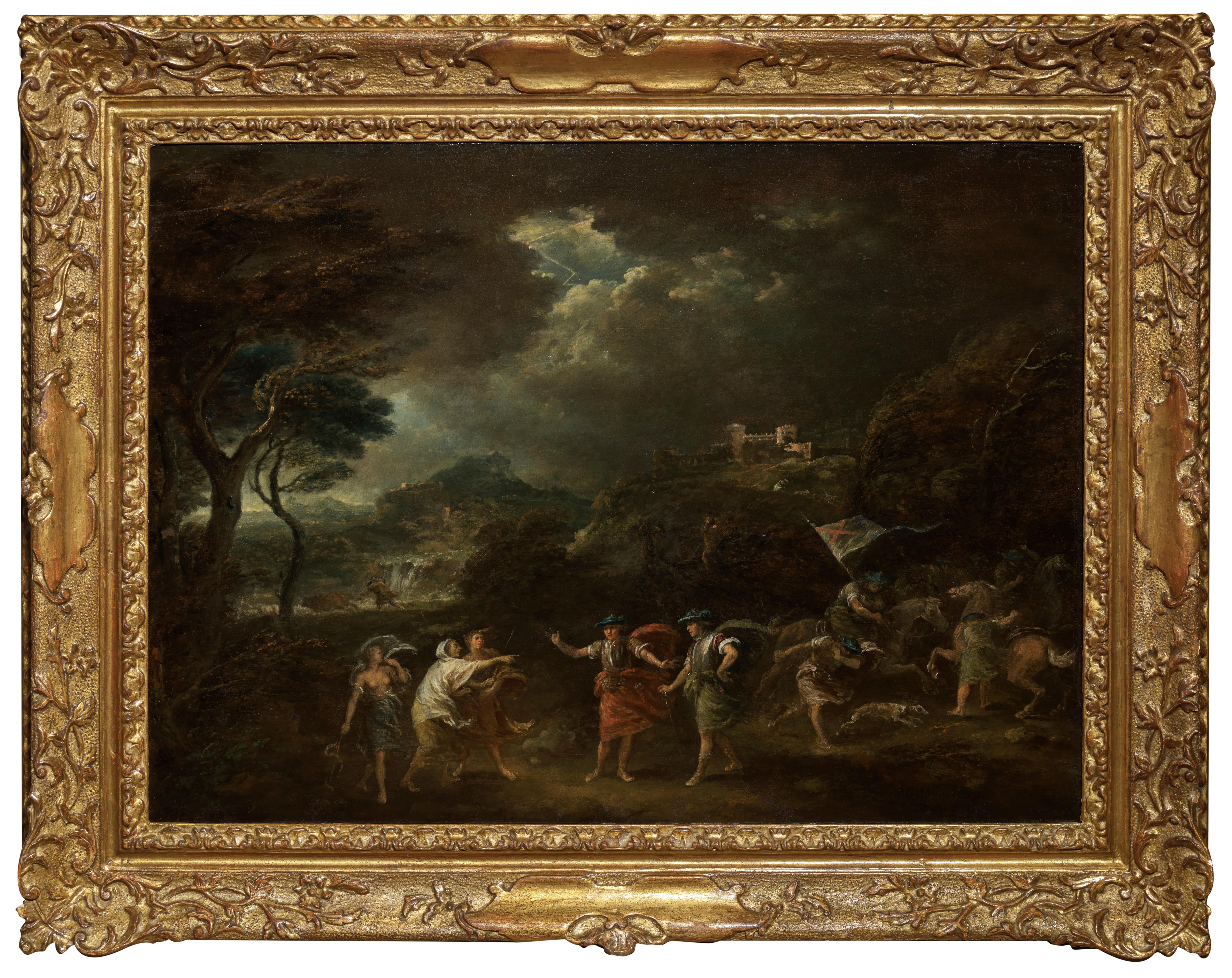Items Similar to Carlo Grubacs 19th Century oil painting of Santa Maria della Salute, Venice
Want more images or videos?
Request additional images or videos from the seller
1 of 10
Carlo GrubacsCarlo Grubacs 19th Century oil painting of Santa Maria della Salute, Venice
About the Item
Carlo Grubacs (Italian, 1810 – 1870)
Santa Maria della Salute, Venice
Oil on panel
Signed ‘C Grubacs’ (lower right)
9.3/4 x 5.3/8 in. (24.8 x 13.8 cm.)
- Creator:Carlo Grubacs (1800, Italian)
- Dimensions:Height: 9.75 in (24.77 cm)Width: 5.38 in (13.67 cm)Depth: 1 in (2.54 cm)
- Medium:
- Period:
- Condition:In very good condition, possible tiny chip to upper left. Some good impasto, paint surface in very order. In a pierced carved frame with some composite detailing and gilding with colour effects with a mottled grey inner section and painted nameplate.
- Gallery Location:Petworth, GB
- Reference Number:1stDibs: LU54038793342
About the Seller
4.9
Platinum Seller
These expertly vetted sellers are 1stDibs' most experienced sellers and are rated highest by our customers.
Established in 2010
1stDibs seller since 2017
228 sales on 1stDibs
Typical response time: 3 hours
- ShippingRetrieving quote...Ships From: Petworth, United Kingdom
- Return PolicyA return for this item may be initiated within 10 days of delivery.
More From This SellerView All
- British 20 Century beach scene of St. Michael's Mount, Cornwall by Paul StephensLocated in Petworth, West SussexPaul Stephens (British, b.1957) Seaside - St. Michael's Mount Cornwall Oil on panel Signed `P Stephens’ (lower left) 23.5/8 x 23.5/8 in. (60 x 60 cm.)Category
20th Century Post-Impressionist Landscape Paintings
MaterialsOil, Panel
- Jean-Baptiste Olive, French Post-Impressionist summer seascape oil paintingBy Jean-Baptiste OliveLocated in Petworth, West SussexJean Baptiste Olive (French, 1848 - 1936) A figure on the beach Oil on canvas Signed 'B. Olive' lower right Measurements in frame: 19 x 22.75 in. This stunning impressionist painting by Jean Baptiste Olive highlights the mediterranean light bleaching the white sands and the azure sea or the South of France. The little figure is captured as a dab of colour against the coastal rock jutting out or the sand. The light blue of the sky is cleverly reflected in the blue / grey shadows of the cliffs and rocks juxtaposing the yellows, reds and whites of the sand and clouds. This painting gets only better and better close up as the impressionist palette and composition comes alive to the eye. We cannot commend this painting and this artist more highly and we are always on the hunt for more of Olive's works. The son of a wine merchant born in Marseille, Olive was encouraged to study at the Ecole des Beaux-Arts in the same town under the guidance of Joanny Rave. After achieving first prize in 1871 as a student for live model drawing he painted many scenes of Marseilles and the surrounding sea shore. He took on many commissions particularly in Paris to decorate frescoes notably Cirque d'Hiver and Basilica of the Sacre Coeur. He exhibited repeatedly at the salon. Today 2 paintings created for the golden room at Le Train Bleu...Category
Early 20th Century Post-Impressionist Landscape Paintings
MaterialsOil, Panel
- 19th Century female artist Antonietta Brandeism Piazza San Marco, VeniceBy Antonietta BrandeisLocated in Petworth, West SussexAntonietta Brandeis (Czech / Italian, 1848 – 1926) Piazza San Marco, Venice Oil on panel Inscribed with studio stamp on the reverse 8.1/4 x 4.3/4 in. (21 x 12.1 cm.) Born in the small Bohemian village of Miskowitz on January 13, 1848, Antonietta Brandeis lost her father at an early age, and probably then moved north to Prague with her widowed mother. At some point in the 1860s, she began studying painting with the Czech artist Karel Javůrek (1815-1909). Although nothing is known about the Brandeis family finances during this period, it would have been unusual for a bourgeois young woman to study painting in any serious fashion; this suggests that perhaps Antonietta’s mother was hoping to provide a marketable skill for her daughter in the world of fine art. During the 1850s-and 1860s, Prague was the center of the Czech National Revival, a cultural movement whose purpose was the rejuvenation of the Czech language as well as the reclamation of a uniquely Czech identity after centuries under the domination of the Hapsburg Empire. Brandeis’s instructor Javůrek seems to have sympathized with this movement, creating history paintings based on Czech–rather than Hapsburg–moments of significance. Brandeis studied with Javůrek for a brief period, undoubtedly learning the basics of academic painting. It is likely that he also introduced her to the artistic ideas then current in Belgium and France, having studied himself with Gustave Wappers at the Royal Academy of Fine Arts in Antwerp and with Thomas Couture at the Ecole des Beaux-Arts in Paris. This exposure to European Romanticism and Realism would have offered the young Brandeis a sophisticated understanding of contemporary aesthetic issues. In the late 1860s, Brandeis left Prague and moved to Venice with her mother, who had married a Venetian gentleman. Once there, she enrolled in the Accademia di belle arti (Academy of Fine Arts) studying with Michelangelo Grigoletti, Domenico Bresolin, Napoleone Nani, and Pompeo Marino Molmenti, all of whom were mainstream academic painters. She graduated in 1872 with a number of honors to her credit, and a Premio award in landscape painting. According to the listing in the Atti della reale Accademia di belle arti in Venezia dell’anno 1872, Brandeis was one of only two women graduating that year, the other being Carolina Higgins, an English woman. The admission of women to officially sponsored fine arts academies in Europe and the US was rare in the 1870s, and enrollment in life classes where nude models posed was almost universally unacceptable for female students. The fact that Brandeis and Higgins seem to have been the only women at the Accademia in the early 1870s tends to suggest that they participated in the same classes as their male classmates. In fact, Brandeis is cited for an award in the “study of the nude”. After graduation, Brandeis began to establish a career as a landscape painter in Venice. In 1873, she showed four paintings at the annual November exposition at the Accademia; these included one portrait, two landscapes, and one vedute of the Grand Canal that was commissioned by an English woman. Although there is no record of who this English woman was, it is tempting to think that she may have been someone Brandeis met through her classmate Carolina Higgins. Over the next few decades, Brandeis seems to have exhibited regularly at the annual Accademia shows, but her primary focus was increasingly on painting Venetian scenes (vedute) that appealed to the always plentiful crowd of visitors to Venice. She specialized in relatively small scale paintings of landmarks in her adopted city, and gradually became part of a community of expatriate artists who shared this interest. Among her friends were the Peruvian artist Federico de Campo and many of the Spanish artists then living in Venice such as Mariano Fortuny, Martin Rico and Rafael Senet. It should be noted too that by the end of the nineteenth century, Venice had become a regular stop for any painter who was particularly fascinated with color and light. Some, like the Americans Walter Gay and John Singer Sargent, spent months or even years living there, and others simply made regular visits, such as Pierre-August Renoir and Claude Monet. However, nearly all painters who traveled through Europe made at least one journey to see Venice’s unique environment. More important for painters like Brandeis were the travelers who came as tourists and wanted a souvenir to take home with them. By the late nineteenth century the aristocratic tradition of the Grand Tour had been considerably democratized by the industrial revolution, which had not only created a newly wealthy merchant class, but had provided the railroad as a means of convenient travel across long distances. Venice was no longer the exotic province of the European aristocracy, but a city that lured bourgeois romantics from all over the world. Brandeis’s images of the city were especially popular with Austrian and English visitors. Brandeis also painted at least three known altarpieces, all for churches in what is today southern Croatia. In the late 1870s when she received the initial commission, the Dalmatian coast of Croatia had trading and cultural ties to Italy dating back to the Roman Empire; however, it was the region surrounding the Republic of Venice that was most influential in the nineteenth century. During this time, the new bishop of Split (Spoleto), Marko Kalogjera, was actively involved in building new churches in Croatia as well as updating the older ones, and it is likely that he was instrumental in hiring Venetian painters for a variety of commissions. In fact, Michelangelo Grigoletto, one of Brandeis’s instructors at the Accademia, had earlier received a commission for a painting in a parish church in the town of Vodice. Given the remote location, it is not surprising that Bishop Kalogjera would turn to Venice when hiring artists for major projects in the towns of Blato and Smokvici. The religious traditions of Venetian painting are clearly evident in Brandeis’s Madonna and Child with St. Vitus at the Church of St. Vitus in Blato. The composition is based on the tradition of the sacra conversazione (sacred conversation) between the Virgin Mary and the saints. In this image, Brandeis presents not only St. Vitus, but also a young man who is apparently suffering from one of the illnesses that the saint was known to cure. The large canvas is surrounded by architectural elements above the altar and creates a dramatic statement as worshippers look up at the elegant Madonna. Brandeis also created two paintings for the church of Our Lady of Carmel in the neighboring town of Smokvici. One features another sacra conversazione, this time with St. Lucia, St. Anthony of Padua and St. Roch. The other is an altarpiece showing the Presentation of Christ in the Temple. These three large scale paintings must have been started in 1879 or 1880 and probably finished several years later. Concurrent with the major altarpiece commissions, Brandeis continued to produce many vedute for travelers in Venice. She also made a number of trips to Florence, Bologna and Rome where she painted cityscapes of the architectural and urban scenes featuring classical and renaissance motifs. The popularity of her work was further enhanced by the production of chromolithographs of her paintings, probably beginning in the late 1880s or 1890s. She expanded her market even further in 1880 when she exhibited three paintings at the International Exposition in Melbourne. In her personal life, Antonietta married Antonio Zamboni on October 27, 1897; Zamboni was a knight of the Order of Saints Maurizio and Lazzaro, originally founded by the Duke of Savoy in 1572, but closely affiliated with the newly united Kingdom of Italy in the late nineteenth century. Brandeis’s enthusiasm for Venice seems to have waned somewhat by 1900 when she was quoted as saying that she was still “a foreigner” in Venice, and she no longer participated in any Italian exhibitions, but sent all of her paintings to London. [v] Brandeis’s early association with English collectors seems to have evolved into a relationship that served her well for many decades. Nonetheless, she remained in Venice until the death of her husband in 1909, at which time she moved to Florence. The full story of Antonietta Brandeis’s life remains unknown, but she seems to have been a woman who challenged social conventions on many levels: as a woman studying in an almost exclusively male academy...Category
19th Century Academic Landscape Paintings
MaterialsPanel, Oil
- British, 19th Century oil painting of nannies in Green Park, LondonLocated in Petworth, West SussexPaul Maitland (British, 1863 – 1909) Nannies in Green Park, before Piccadilly, London Oil on panel 7.5/8 x 11.3/8 in. (19.4 x 29 cm.) . In a gilded woo...Category
19th Century Impressionist Landscape Paintings
MaterialsPanel, Oil
- Claude-Joseph Vernet 18th century Old Master landscape, grand tour ItalyBy Claude-Joseph VernetLocated in Petworth, West SussexClaude-Joseph Vernet (French, 1714 – 1789) Fisherman by a cascade in a gorge Oil on canvas 22.1/4 x 25.1/2 in. (56.5 x 64.7 cm.) Provenance: The estate of the late Betty, Lady Grantchester Du Catalogue Collection #39 Christie's London, 3 Dec 1997, Lot 52 (£41,000) Claude-Joseph Vernet was the leading French landscape painter (with Hubert Robert) of the later 18th century. He achieved great celebrity with his topographical paintings and serene landscapes. He was also one of the century's most accomplished painters of tempests and moonlight scenes...Category
18th Century Old Masters Landscape Paintings
MaterialsOil, Canvas
- Pair of early 20th Century British Impressionist paintings of the beachLocated in Petworth, West SussexAttributed to Rowland Wheelwright, 20th Century 'Bather's on the shore' and 'Sunbathing by the Cliffs' Oil on canvas board 9 X 10. 1/4in. (22.8 X 2...Category
20th Century Impressionist Figurative Paintings
MaterialsOil, Canvas, Board
You May Also Like
- "Obliteration" Oil and Alkyd Painting on Wood Panels, Yellow, Red, OrangeBy Grace Graupe-PillardLocated in New York, NYGrace Graupe-Pillard has concentrated on portraiture since her early charcoal drawings which she exhibited at The Drawing Center, NYC in 1981. Her work, which has been exhibited at notable institutions such as MOMA PS1 and galleries including Cheim & Read Gallery (NY) and Carl Hammer Gallery (Chicago), has evolved from over the years from pastels to large-scale oil paintings and installations of people who she describes as “having not been integrated into mainstream society.” Her more recent paintings, inspired by selfies and iPhone photographs, attempt to convey the vitality and diversity of 21st century contemporary culture while capturing the ineffable moments in our lives. “The sensuality and radiant beauty of youth and ethnic diversity are depicted in my choice of subjects, as well as the ravages of time which are imprinted on our being. All stages of life are filled with humanity that both elevates and dissipates the spirit.” Her work has been written about in The NY Times, Art News, The Village Voice, The Star-Ledger, Newsday, Flash Art...Category
2010s Contemporary Paintings
MaterialsOil, Alkyd, Paint, Wood Panel
- The IntruderBy Arthur Fitzwilliam TaitLocated in New York, NYArthur Fitzwilliam Tait was born at Livesey Hall, near Liverpool, England, and began his career as a clerk at the gallery of Agnew & Zanetti’s Repository of Arts in Manchester. While...Category
19th Century American Realist Animal Paintings
MaterialsOil, Wood Panel
- Keeping CompanyLocated in Atlanta, GABeing born into a family of six children all of them artists, designers, and musicians…a future in the creative arts was unavoidable. A North Carolina native, Marlise obtained a degr...Category
2010s Modern Animal Paintings
MaterialsOil, Wood Panel
- Ciel d'été, Original Oil Painting, Landscape, Tree, Ready to hangLocated in AIX-EN-PROVENCE, FRWork : Original Oil Painting, Handmade Artwork, Unique Work. Ready to Hang with two studs. Medium : Oil on mounted linen on wood. Artist : Gabriel Riesnert Subject : Ciel d'été (Tit...Category
21st Century and Contemporary Realist Landscape Paintings
MaterialsOil, Wood Panel, Linen
- "Young Beauty Crossing Brook with Hunter, " Emile Pierre Metzmacher French SalonLocated in New York, NYÉmile-Pierre Metzmacher (French, 1815 - 1890) A Young Beauty Crossing a Brook, A Hunter Beyond Oil on panel 24 x 19 1/2 inches Signed lower left Provenance: Christie's New York, Oct...Category
Mid-19th Century Figurative Paintings
MaterialsOil, Wood Panel
- Macbeth and the Three Witches a Painting on Panel by Francesco ZuccarelliBy Francesco ZuccarelliLocated in PARIS, FRThis painting, created during Zuccarelli's stay in England, represents the decisive moment when Macbeth, together with Banquo, meets the three witches who announce that he will be Ki...Category
1760s Old Masters Landscape Paintings
MaterialsOil, Wood Panel
Recently Viewed
View AllMore Ways To Browse
Venice Wood
Santa Maria
Antique Santa
Antique Santas
Santa Maria Della Salute
Racines Collections
Men In Boat
E M Washington
Autumn Leaf
May Stevens
Provencal Painting
Irish Coast
Riviera Oil Painting
Dutch Landscape Oil Painting Small
Irving Oil
Italy Landscape Coastal Painting
Christmas Book
Canvas Painting Cape Cod





